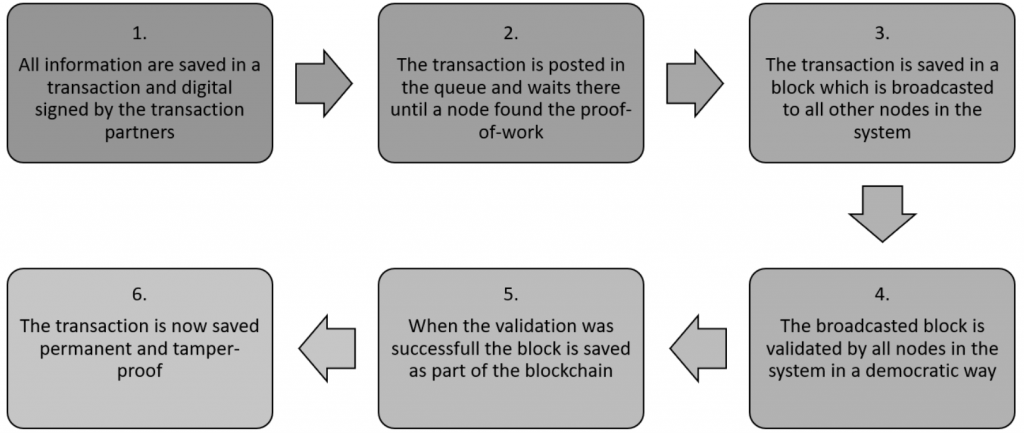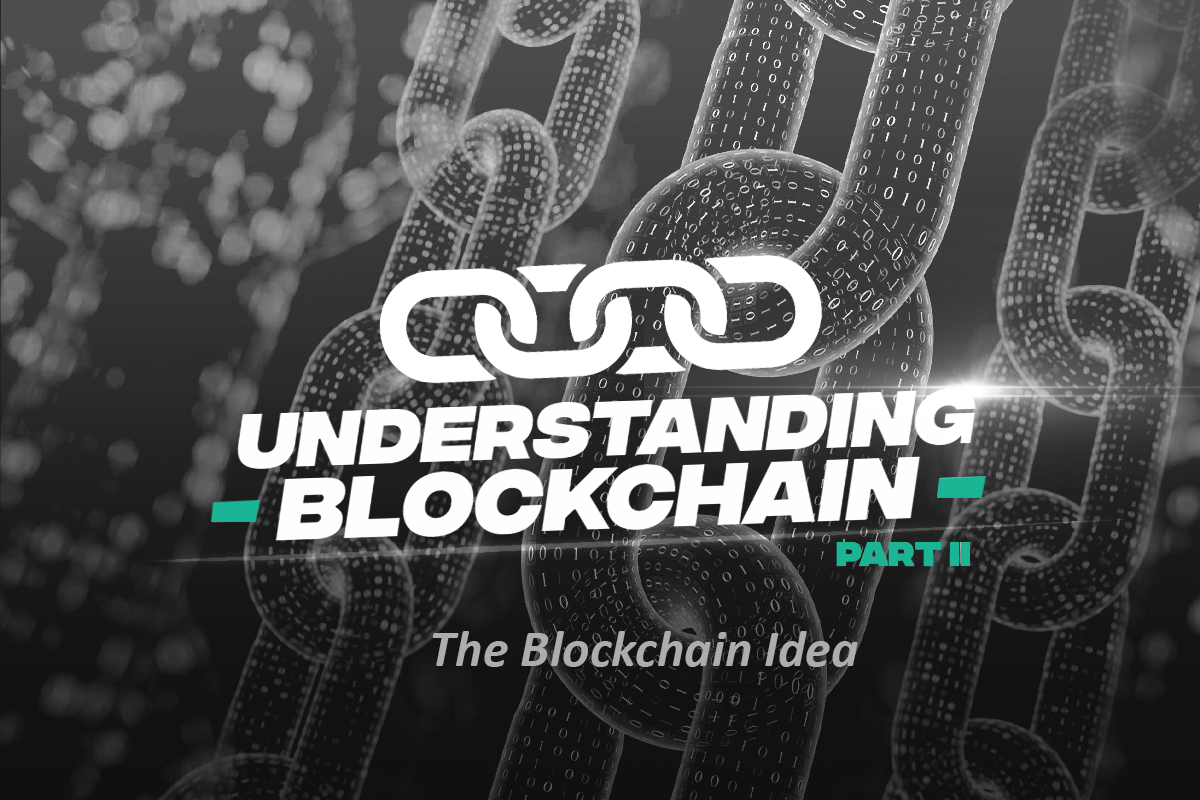Most people directly associate the blockchain with Bitcoin. However, the blockchain is not as much a software as a set of technologies based on the idea of distributed systems, extended by integrity and security while keeping up transparency, publicity and its other advantages.
The blockchain works as a shared ledger of transactions which are saved in datablocks. This means whenever information shall be read from the blockchain, it is mandatory to read all blocks to know the actual state of the ledger. This principle requires all nodes of the blockchain always to be able to provide all blocks to the client.
A block within the blockchain is always structured in the same way. It contains a reference to its preceding block as a hash value, a puzzle which has to be solved as the proof of work, the solution for this puzzle, a timestamp of the moment when it was solved and the root of a tree structure of transactions which are saved in this block.
Many of those blocks are saved as a chain of references between each other, giving this technology its name. To make those references unalterable, the content of the preceding block is hashed and this hash value is saved in the following block. Whenever the data of the preceding block changes, the result of hashing this block would change and would not be equal to the reference in the following block anymore. As a result of this, whenever the content of a block changes, it is necessary to change all subsequent blocks in the chain. This makes manipulating blocks or transactions in a block complex and time-consuming. To avoid manipulation of a blockchain by algorithms or pure computational power, it is essential to make changing a single block computationally expensive. Consequently, when changing a single block is expensive, changing a whole chain becomes nearly impossible. The change of a block is made computationally expensive by the proof of work, a randomly created hash puzzle which must be solved by trial and error before the block becomes part of the chain.
The procedure of posting a block into the blockchain starts with creating transaction data and broadcasting it to all nodes in the system (Figure 2-3). To prove that the node which initially created this transaction is authorized and to ensure that it is not manipulated, the transaction is provided with a digital signature.21 Therefore the content of the transaction is hashed and afterwards encrypted with the private key of the owner.

Figure 2-3: Process of a block getting posted into the blockchain (Crosby et al., 2015, p. 7)
Afterwards the transaction data and the encrypted hash value are saved together. To ensure that the transaction is approved by the owner, it is possible to decode the encrypted hash value by using the public key of the owner. The result of the decoding is compared to the result of the hashed transaction data. If they are similar, the transaction is valid and authorized by the owner.
All new transactions received by a node are collected into a block by adding them into a Merkle tree and adding the root of the tree into the data of the block. Now the nodes start finding the proof of work for its block. When a node finds the solution for the puzzle it adds the solution and a timestamp into the block data and broadcasts the block to all nodes in the system. All other nodes immediately stop finding the proof of work and begin verifying the block they received before, by checking the digital signature and the proof of work. If the block is valid, the nodes add the block into their chain and start creating the next block. If the block is not okay, the node which detects the fault informs all nodes to discard the malignant block and advises them to put the transactions back into their queue.
By providing public access on all transactions, the blockchain enables the entirety of nodes in a distributed system to govern integrity in democratic fashion and makes intermediaries un- necessary. This technique allows nodes to share their transactional information with each other securely and almost in real time, while also highly reducing transaction costs by replacing the intermediaries.
This technique has the potential to revolutionize several markets by disintermediation. Wherever a third party is involved only to monitor integrity and compliance or to mediate between a large number of producers and consumers, this third party can thus be replaced. For example, Napster revolutionized the music market by disintermediation in 1999. For these reasons, Don Tapscott called the blockchain „the trust protocol“.
